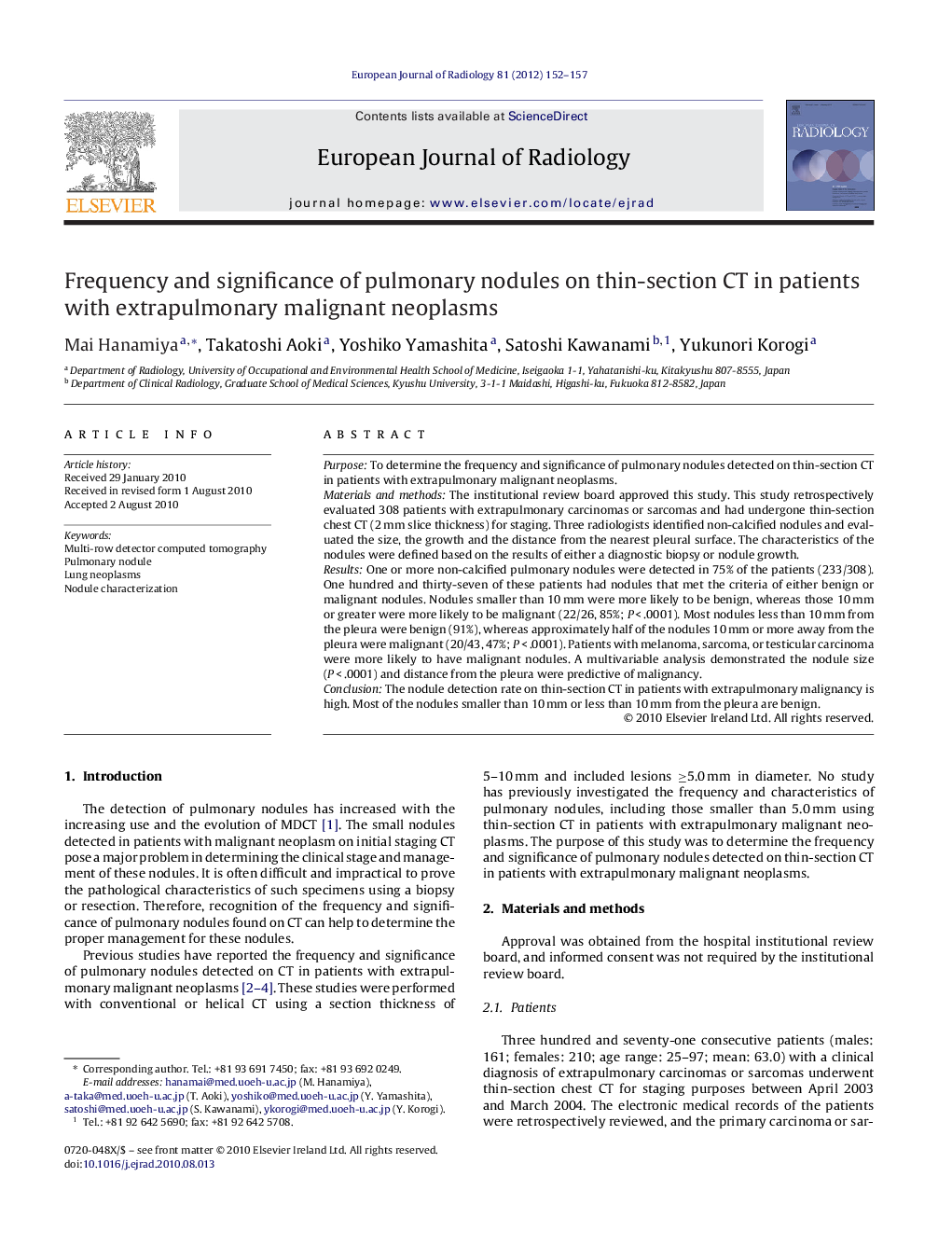| Article ID | Journal | Published Year | Pages | File Type |
|---|---|---|---|---|
| 4226285 | European Journal of Radiology | 2012 | 6 Pages |
PurposeTo determine the frequency and significance of pulmonary nodules detected on thin-section CT in patients with extrapulmonary malignant neoplasms.Materials and methodsThe institutional review board approved this study. This study retrospectively evaluated 308 patients with extrapulmonary carcinomas or sarcomas and had undergone thin-section chest CT (2 mm slice thickness) for staging. Three radiologists identified non-calcified nodules and evaluated the size, the growth and the distance from the nearest pleural surface. The characteristics of the nodules were defined based on the results of either a diagnostic biopsy or nodule growth.ResultsOne or more non-calcified pulmonary nodules were detected in 75% of the patients (233/308). One hundred and thirty-seven of these patients had nodules that met the criteria of either benign or malignant nodules. Nodules smaller than 10 mm were more likely to be benign, whereas those 10 mm or greater were more likely to be malignant (22/26, 85%; P < .0001). Most nodules less than 10 mm from the pleura were benign (91%), whereas approximately half of the nodules 10 mm or more away from the pleura were malignant (20/43, 47%; P < .0001). Patients with melanoma, sarcoma, or testicular carcinoma were more likely to have malignant nodules. A multivariable analysis demonstrated the nodule size (P < .0001) and distance from the pleura were predictive of malignancy.ConclusionThe nodule detection rate on thin-section CT in patients with extrapulmonary malignancy is high. Most of the nodules smaller than 10 mm or less than 10 mm from the pleura are benign.
